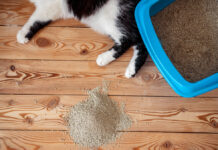Hey there, fellow pet parents! Ever been chillin’ with your furry bestie on a hot summer day, enjoying some rainbow sherbet, and wondered if you could share some with your four-legged friend? Well, you’re not alone! Let’s dive into everything you need to know about dogs and sherbet.
The Quick Answer
TL;DR While dogs can technically eat sherbet, they probably shouldn’t. It’s not toxic like chocolate, but it’s not exactly a healthy choice for your pup either.
Why Sherbet Isn’t the Best Treat for Your Doggo
1. Sugar Overload
Look, I’m gonna be real with you – sherbet is basically sugar on sugar with some more sugar sprinkled on top. Here’s what too much sugar can do to your fur baby:
- Make them super hyper (like they need more energy, right?)
- Cause weight gain
- Lead to dental problems
- Risk of diabetes in the long run
- Upset their tummy big time
2. Dairy Concerns
Most doggos are actually lactose intolerant (yep, who knew?) Sherbet contains dairy, which can cause
- Diarrhea
- Vomiting
- Stomach cramps
- General digestive upset
3. Artificial Ingredients
Most store-bought sherbet contains – Artificial colors- Preservatives- Flavoring agents- Other chemicals your pup’s system isn’t designed to handle
What Happens If Your Dog Already Ate Some Sherbet?
Don’t panic! If your furry friend managed to sneak a lick or two, here’s what you should do:
-
Watch for these symptoms:
- Excessive thirst
- Upset stomach
- Diarrhea
- Vomiting
- Lethargy
-
Contact your vet if:
- Your dog ate a large amount
- Shows any concerning symptoms
- Has existing health conditions
Better Alternatives to Sherbet
Instead of sherbet, try these pawsome frozen treats:
1. Homemade Pupsicles
- Frozen plain yogurt (small amounts)
- Frozen fruit chunks (dog-safe ones)
- Ice cubes with a bit of low-sodium chicken broth
2. Dog-Safe Fruits
- Watermelon (no seeds)
- Blueberries
- Apple slices (no seeds)
- Frozen banana chunks
3. Commercial Options
- Dog-specific ice cream
- Frozen treats made for pets
- Ice cube treats with pet-safe ingredients
DIY Dog-Friendly Frozen Treat Recipe
Banana Berry Pupsicle
Ingredients:– 1 ripe banana- 1/2 cup blueberries- 1 cup plain, non-fat yogurt (optional)- Water as needed
Instructions:1. Mash the banana2. Mix in blueberries3. Add yogurt if using4. Freeze in ice cube trays5. Store in freezer-safe container
The Bottom Line
While sharing treats with our furry friends is tempting, sherbet isn’t the best choice. There are so many better options that won’t risk your pup’s health! Remember, our doggos depend on us to make good choices for them, even when those puppy eyes are begging for a taste of our dessert!
FAQ About Dogs and Frozen Treats
Q: Can dogs eat any kind of ice cream?
A: While plain vanilla ice cream in tiny amounts might be okay occasionally, it’s best to stick to dog-specific frozen treats.
Q: What about sugar-free sherbet?
A: Even worse! Many sugar substitutes, especially xylitol, are toxic to dogs.
Q: How much frozen treat can I give my dog?
A: Treats should only make up about 10% of your dog’s daily calorie intake.
Q: Can puppies have frozen treats?
A: Yes, but start very small and make sure it’s puppy-safe. Their tummies are extra sensitive!
Tips for Treating Your Dog Safely
- Always introduce new treats gradually
- Watch for any adverse reactions
- Keep portions small
- Choose natural ingredients when possible
- Consider your dog’s specific health needs
Warning Signs to Watch For
If your dog has eaten sherbet or any frozen treat, watch for:- Excessive drooling- Changes in behavior- Digestive issues- Unusual lethargy- Loss of appetite
Final Thoughts
Look, we all want to spoil our furry friends – they’re family after all! But showing love doesn’t always mean sharing our human treats. Instead, try some of the awesome alternatives we’ve discussed. Your doggo will be just as happy, and you’ll have peace of mind knowing you’re keeping them healthy.
Remember, every dog is different, so what works for one might not work for another. When in doubt, always check with your vet before introducing new treats to your pup’s diet.
Now go forth and create some pawsome frozen treats that’ll make your furry friend’s tail wag with joy! And hey, maybe save that sherbet for yourself – you deserve it!
Disclaimer: This article is for informational purposes only and does not substitute professional veterinary advice. Always consult with your veterinarian about your dog’s specific dietary needs.






![Can Dogs Have Sherbet? The Sweet Truth About This Frozen Treat! [Discussion] Is it okay to reward my dog with sherbert?](https://petlikeboss.com/wp-content/uploads/2024/10/Can-Dogs-Eat-Orange-Sherbet-696x392.jpg)





